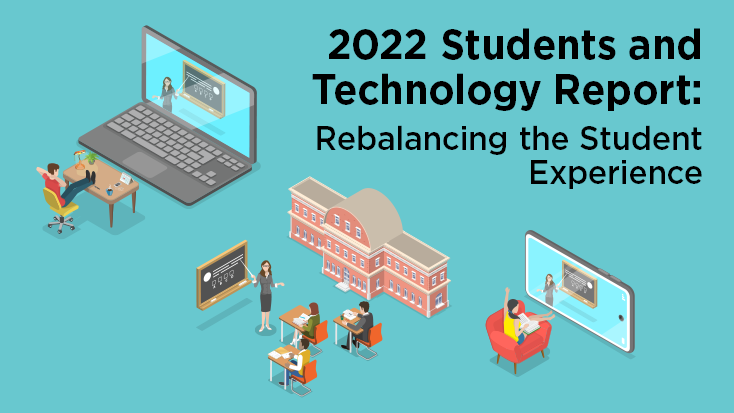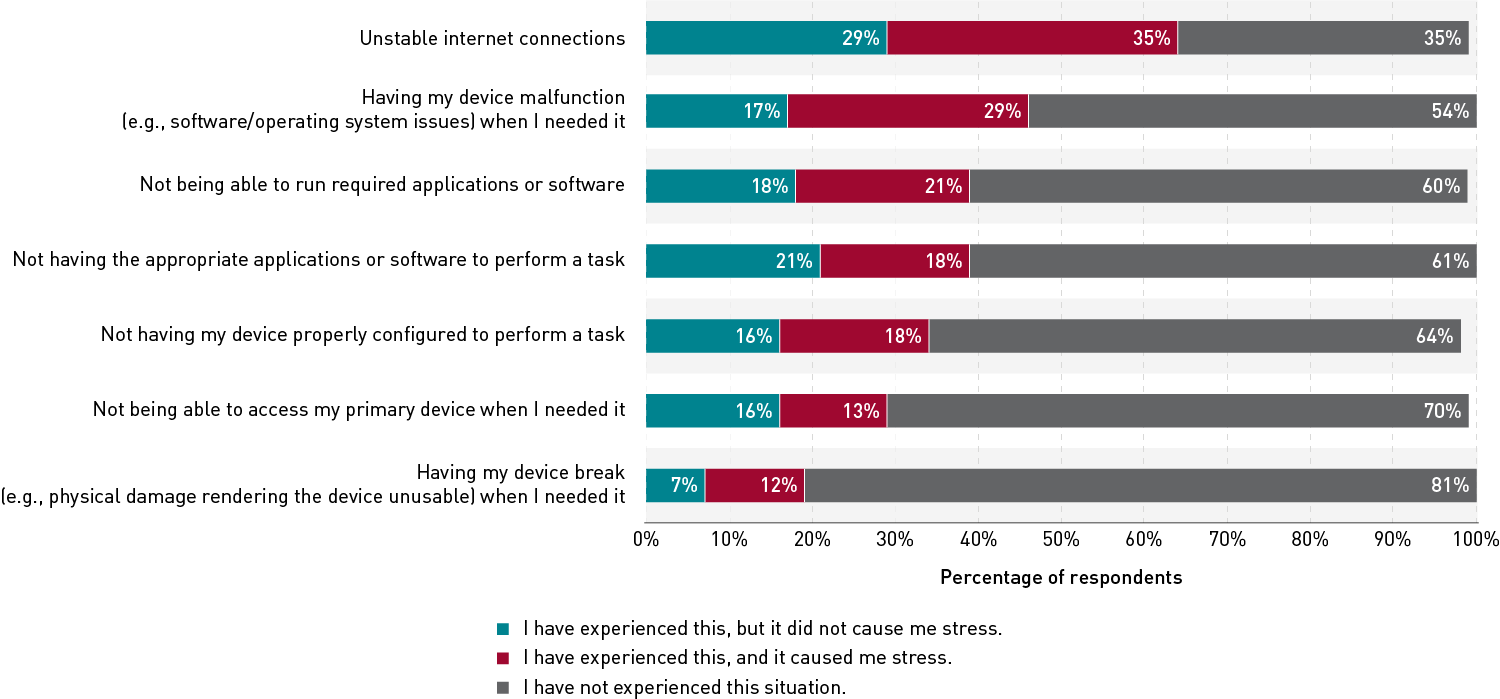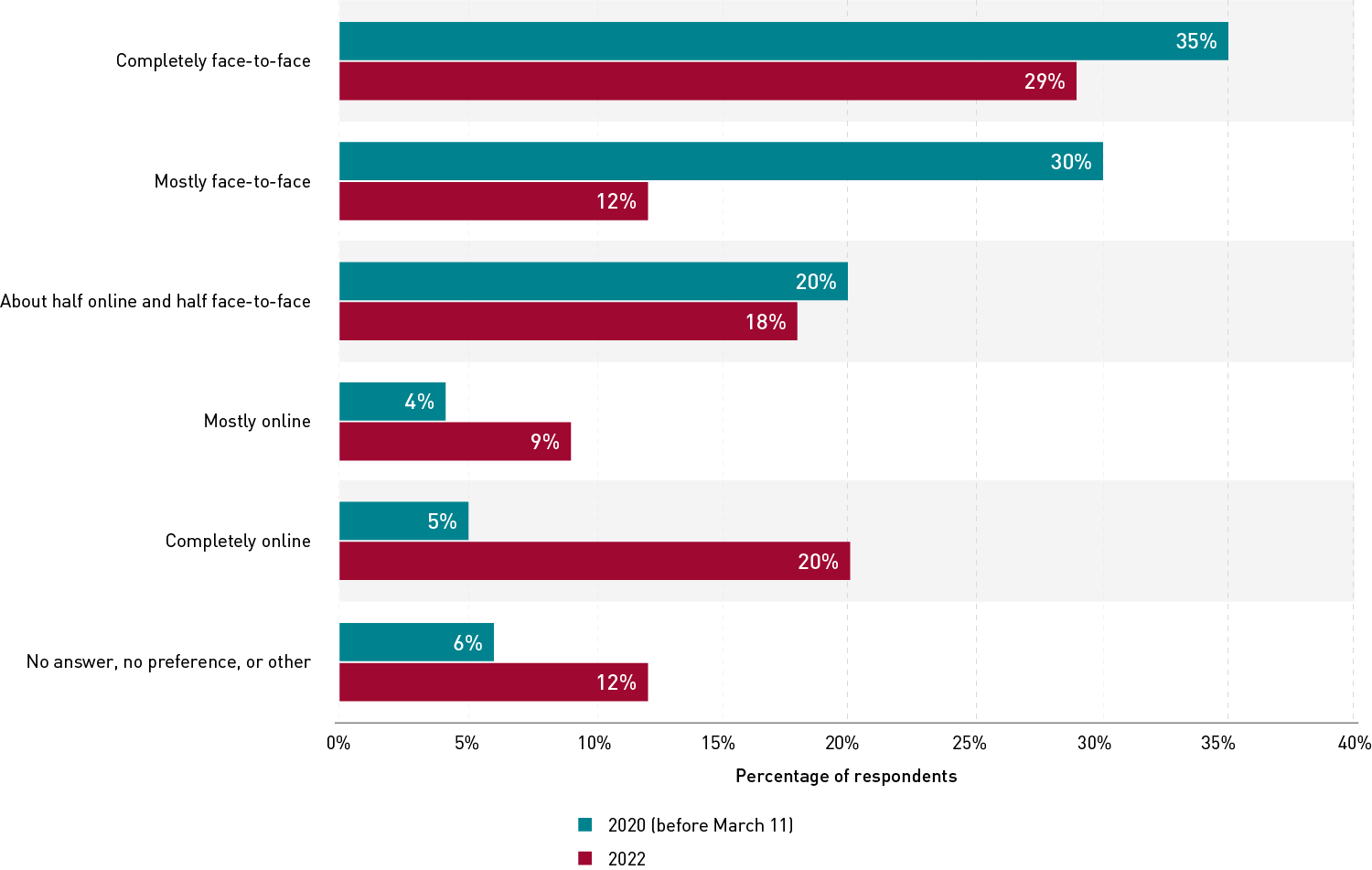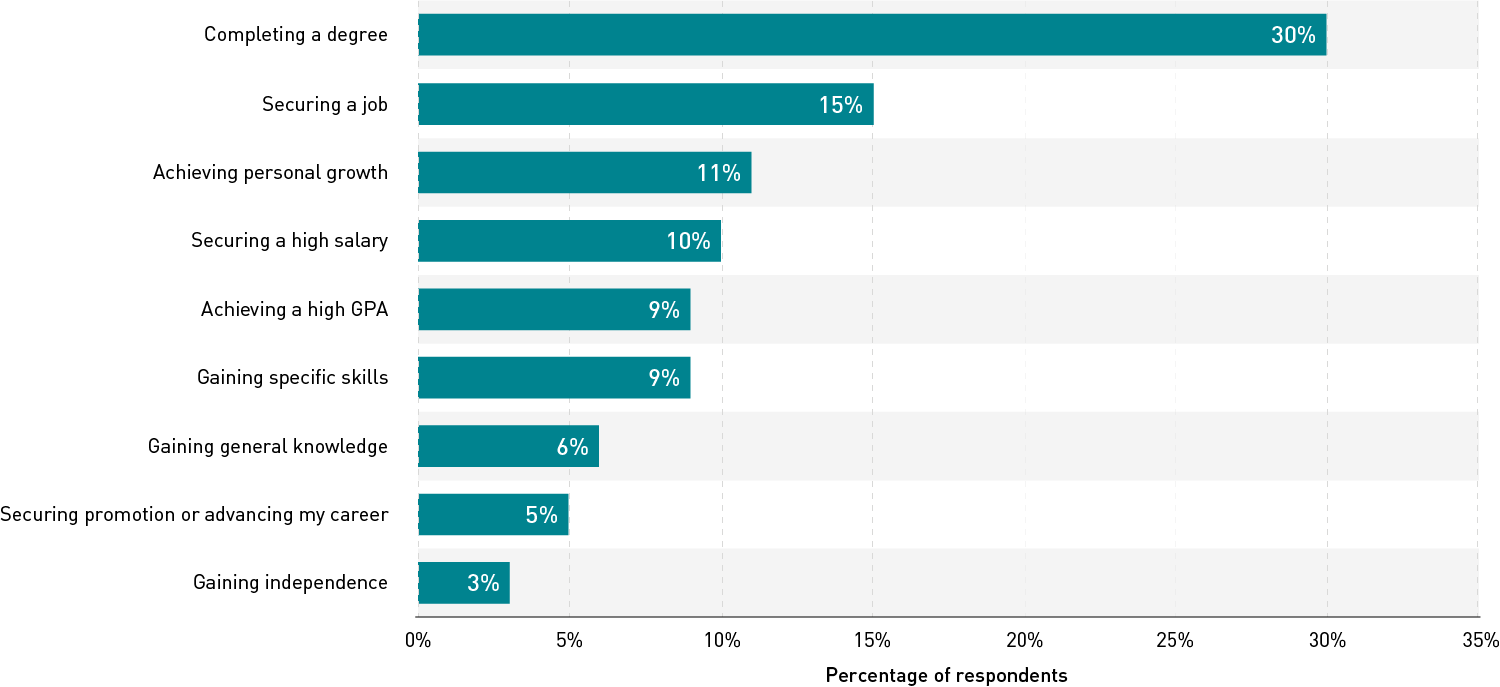2022 Students and Technology Report: Rebalancing the Student Experience
Read full report: HTML | Other materials
In our latest student technology report we share the results of our spring 2022 survey of 820 U.S. undergraduate students, across four key areas: Technology Challenges and Solutions, Modality Preferences, Access to Educational Technology, and Student Success.
Learn about what students told us they need and want, and get recommendations on how to translate the research into action at your institution.
Read the report introduction >
Technology Challenges and Solutions
While educational technology can certainly enhance students' experiences, it can present some challenges as well. More than three-quarters (77%) of respondents reported having experienced one or more technology issues within the past academic year.
Read more about technology challenges and solutions >
Modality Preferences
One of the hottest topics in higher education these days is the future of instructional modalities. Survey data reveal an interesting trend in students' stated preferences.
Learn more about modality preferences >
Access to Educational Technology
Assistive technology is not only for students with disabilities. In this survey, only 5% of respondents indicated that they have a disability for which they need assistive technology. However, when provided with a list of specific assistive technologies, every item on the list was selected as necessary by at least 18% of respondents.
Read more about access to educational technology >
Student Success
Supporting student success is a multifaceted endeavor. In keeping with previous EDUCAUSE research findings, almost a third (30%) of respondents indicated that completing a degree is the most important measure of success for their undergraduate experience.
Learn more about student success >
Reports and Supporting Materials




